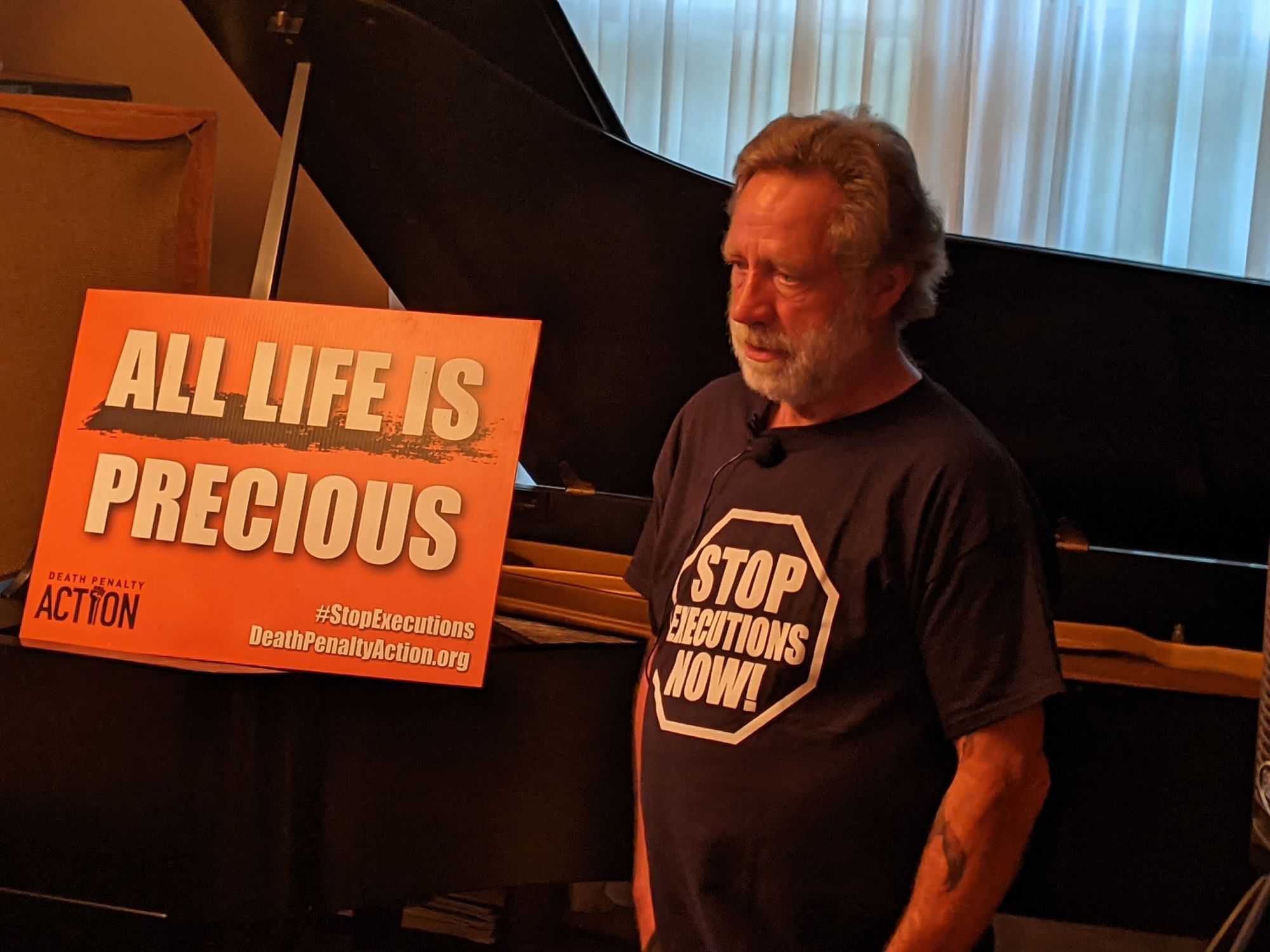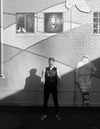The death squad will be made up of volunteers
No one gets to shoot a blank conscience round

There was a study out this month in the Journal of the American Medical Association that showed a big spike in alcohol related deaths in 2020 which happened to be the first year of the pandemic. I’d like to hear from some of you about how the past couple of years of living through Covid has altered your drinking habits if you’d like to share. It will be anonymous.
Today Hell World South Carolina correspondent Paul Bowers writes for us on the recent news about the death penalty in his state.
Previously for Hell World he interviewed Fred A Leuchter Jr., aka Mr. Death.

The death squad will be made up of volunteers
by Paul Bowers
The last person to be killed by a firing squad in the United States was Ronnie Lee Gardner in the state of Utah in 2010. Hundreds of cops volunteered for the job of shooting him in the chest. Five were chosen.
I met Ronnie’s brother Randy last year at an event in Columbia, South Carolina, organized by the death penalty abolitionist group Death Penalty Action. This was late May 2021, and the state of South Carolina was making preparations to electrocute two of the inmates living on its Death Row. At the time, the South Carolina legislature had also opened up the possibility of a firing squad, but the Department of Corrections hadn’t assembled a team yet.
Last week the SCDC announced it was all set to start shooting prisoners, clearing a legal roadblock after a court ruled last year that they must give the condemned an option between the electric chair and the death squad. They say they have rigged up the death chamber in Columbia with bulletproof glass, a firing squad chair with restraints, and a portal that will keep witnesses from seeing the three shooters. Unlike in traditional firing squads, all three rifles will be loaded with live ammunition; no one gets to shoot a blank “conscience round.”
As for the shooters, the Post and Courier reports: “The death squad will be made up of volunteer Corrections employees who meet certain criteria, the agency said, without specifying the qualifications.”
Back in May 2021 when I met the Death Penalty Action organizers, we sat in the parlor of a historic house less than a mile from the Statehouse. The meeting began with our host playing “Amazing Grace” on her piano, after which speakers whose lives had been marred by the death penalty took turns testifying. The group included the Rev. Sharon Risher, who had lost her mother, two cousins, and a lifelong friend in the 2015 massacre at Emanuel AME church. She was fighting to stop the state from killing Dylann Roof, the white supremacist who had shot her loved ones to death.
When Randy Gardner got up to speak, his words were clipped and his sentences short. He told us how hundreds of law enforcement officers had volunteered to shoot his brother — and yet, sometime after the execution when he met one of the five who had been chosen for the job, the shooter expressed regret.
“It ruined him,” Randy said of his brother’s executioner.
On the coffee table in the parlor, I noticed Randy had brought along a cardboard tube, the kind that nicer bottles of liquor come in. Talking with Randy in the kitchen afterward, I found out what was inside it.
After his brother’s death, Randy had to fight the state to obtain autopsy photos of his brother’s body. When he finally got them, he had them printed on large format glossy paper. Now he carries the prints with him around the country, displaying them for people who want to see.
I told him I wanted to see. He unrolled them on the counter one by one. One of the photos was of a blood-soaked prison jumpsuit. Others were incoherent closeups of the bullet wounds, the torn flesh of his brother’s ruined body.
Executions used to happen in front of crowds in public squares, not in chambers with limited seating and a handful of witnesses. That started to change as we moved on from hangings and beheadings to more modern techniques. In 1890 inside a chamber at the prison in Auburn, New York, the state tried to execute William Kemmler using an electric chair designed by a dentist. There were only 17 witnesses watching as the first shock failed to kill him and the second caused his flesh to cook, filling the room with an acrid smell
“They would have done better using an axe,” the inventor George Westinghouse quipped.
In a 1994 review of the legal and technological history of the electric chair, Deborah W. Denno wrote that executions didn’t become truly private affairs until 1937, when the last legal hanging took place in Missouri. “This evolution from public to private … evidenced some recognition that common execution methods were repugnant even if they did not resemble methods used in the past,” Denno wrote.
For a stretch of the late 20th into the early 21st century, it became common practice for states to kill prisoners with poison. That began to change when, caving to international pressure, pharmaceutical companies stopped selling drugs like pentobarbital, potassium chloride, and sodium thiopental to state governments. In some states like Ohio, doctors refused to attend executions and perform the required time-of-death duties, effectively bringing the practice to a halt. When my state, South Carolina, ran out of its supply of lethal injection drugs in 2013, our leaders got their heads together and started brainstorming on how to kill prisoners creatively. They wound up bringing back older techniques that are more “repugnant,” aesthetically speaking, than the apparent clinical administration of lethal injection.
The first person I heard talking about shooting imprisoned people to death was a fresh-faced young Bible college graduate named Joshua Putnam, who held a state House seat representing a district in the Upstate. In April 2015 after the drugs ran out, he introduced a bill to authorize firing squads.
Rep. Putnam wanted us to bracket off the morality of capital punishment for a moment and find a practical solution for the problem of how to kill Death Row inmates.
“I know people that are against capital punishment altogether, and I understand where they come from, and I’m not trying to change their beliefs,” Putnam said when I interviewed him for the Charleston City Paper in 2015. “We currently have capital punishment on the books, we currently do capital punishment, and I’m trying to, number one, find a solution to the problem the state faces right now, and also find a more humane way of doing it.”
Putnam was a low-ranking rookie in the General Assembly, and his bill stalled out in committee. In the intervening years, leading GOP luminaries have proposed a few other ideas. Governor Henry McMaster pushed for a “shield law” that would have authorized the state to make clandestine drug purchases, but that bill failed. Senator William Timmons introduced a bill to put every Death Row inmate in the electric chair, without offering the option of lethal injection.
Finally last year, a bipartisan group of statesmen passed a bill that technically allowed three options: lethal injection, electrocution, or firing squad.
We have heard a lot of dithering here about the most moral and humane way for the state to murder someone. I posit that there is no moral or humane way to do it, for the same reasons listed by the ACLU and my local DSA chapter: It’s cruel, arbitrary, and expensive. It leads us to kill innocent people, and it is not even an effective crime deterrent. It’s also deeply racist in practice, a fact that members of the South Carolina Black legislative caucus knew well when they filibustered for 6 days in 1977 against a law bringing back the death penalty after a hiatus.
In the states still carrying out the death penalty, we are left with legal maneuvers and debates about the proper technology for killing. It’s hard to say who is correct in these debates because, outside of certain fascist regimes, people have rarely devoted much scientific research to the most effective or “humane” ways to end the lives of captive people. Not coincidentally, some of our leading lights on the subject are people like Fred A. Leuchter Jr., a.k.a. “Mr. Death,” the self-taught electrician and Holocaust denier who sold death chamber equipment to at least 27 states in the 1980s and early 1990s.
The truth is that the United States has never had a system of clinical precision for executing the condemned. Instead we have a patchwork, pell-mell system of death contraptions devised by hobbyists and often built by prison labor, or staffed by volunteers in the case of firing squads. We shamble on, killing as best we can, ruining ourselves.
Paul Bowers (@Paul_Bowers) is a writer and former newspaperman from North Charleston, SC, who is working on a book about brutalist architecture in the American South. He runs a newsletter and podcast called Brutal South.
Ok that’s all for today. Be back in a few days. Here are two songs I liked this week. Goodbye.
